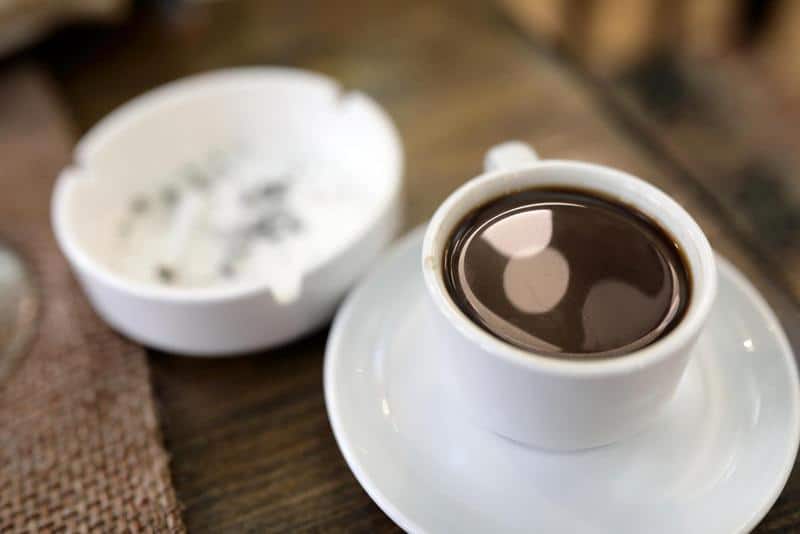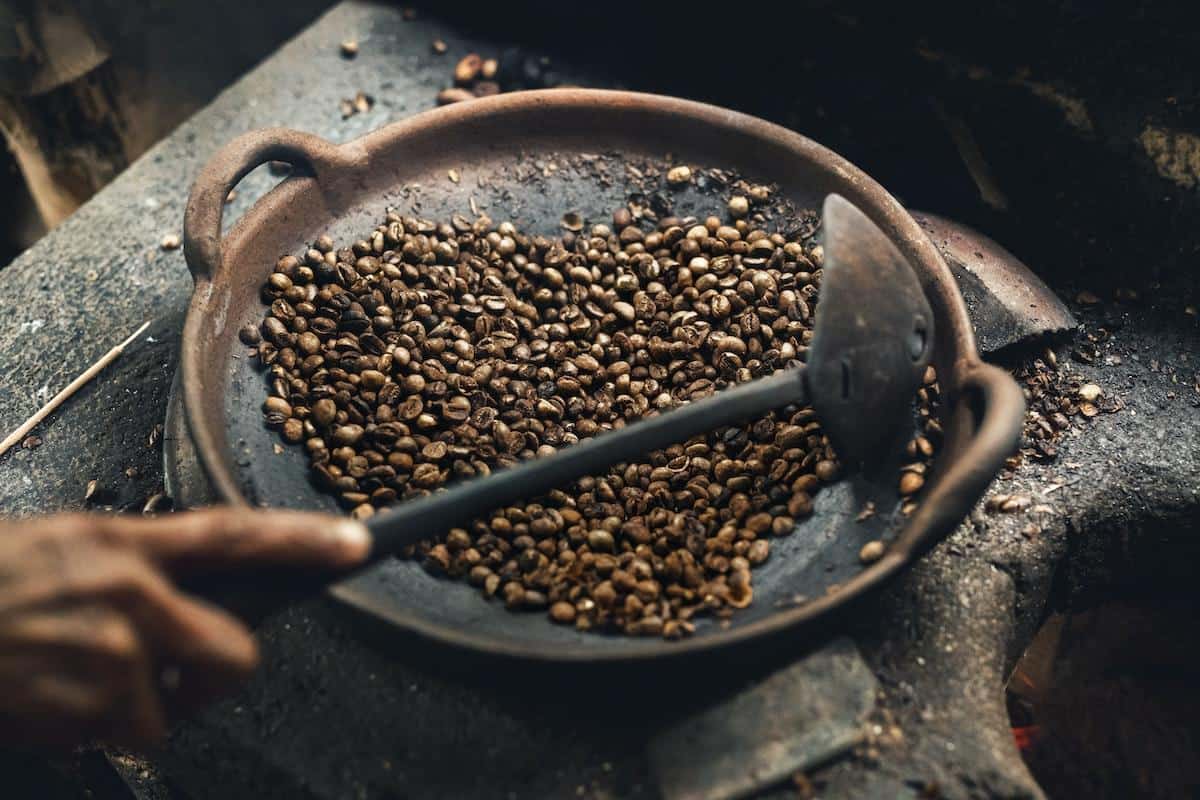Armenian coffee, with its deep flavors and rich cultural significance, has long been an integral part of Armenian tradition. This ancient brewing method holds a storied history that dates back centuries, originating in the lands where coffee beans were first cultivated. In this introductory section, we will delve into the origins of Armenian coffee brewing, explore its cultural significance and traditional brewing methods, as well as provide a brief comparison to other popular coffee variations.
From the moment it was introduced to Armenia, coffee quickly became an essential aspect of daily life. Armenians embraced this bold and fragrant beverage, developing their own unique techniques for brewing and serving it.
Traditionally prepared in small copper pots called jazzve or cezve, Armenian coffee is known for its strong flavor and intense aroma. This traditional method of preparation has been passed down through generations, preserving both the tastes of old and the customs associated with enjoying a cup of this powerful brew.
While many cultures have created their own versions of coffee beverages, what sets Armenian coffee apart is its distinctive brewing process and the carefully selected high-quality beans used. The finely ground beans are boiled slowly on low heat to extract their full flavor potential. This traditional method results in a rich and robust cup of coffee that captures the essence of Armenia’s unique blend of spices and culture.
In comparison to other popular coffee variations such as espresso or cappuccino, Armenian coffee offers a distinct taste experience that sets it apart from its counterparts. Its bold flavors can be likened to Turkish or Greek coffee; however, there are subtle differences in the grinding methods and spices used. These nuances contribute to the complexities found within each sip of a freshly brewed cup of Armenian coffee.
Join us on a journey through time as we uncover the rich history and traditions surrounding Armenian coffee brewing. From the origins of this ancient practice to the secrets behind achieving the perfect balance of flavor and aroma, we will explore the unique aspects that make Armenian coffee a powerful brew to kickstart your day. Prepare yourself for an adventure not only into the depths of coffee culture but also into the heart and soul of Armenia itself.
The Art of Perfecting the Brew
Armenian coffee is not only known for its rich flavor and aroma, but also for the unique brewing method that is used to prepare it. Making Armenian coffee requires a specific set of steps and techniques in order to achieve the perfect balance of taste and texture. Whether you are a beginner or an experienced coffee enthusiast, mastering the art of brewing Armenian coffee is a worthwhile endeavor.
Detailed step-by-step guide to brewing Armenian coffee
To start, you will need a traditional Armenian coffee pot called a jazzve or cezve, which is typically made of copper or brass. The pot has a distinctive shape with a long handle and a narrow spout. Begin by adding finely ground Armenian coffee into the jazzve, using approximately one heaping teaspoon per cup of water.
Next, carefully pour cold water into the jazzve, making sure not to overfill it. The ratio commonly used is one cup of water for each cup of coffee desired. It is essential to avoid stirring the mixture at this stage as it will disrupt the later layering effect.
Place the jazzve on low heat and slowly bring it to a simmer. Pay close attention as the mixture heats up because once it starts bubbling, you will need to remove it from the heat immediately. This bubbling effect creates a layer of foam on top known as “kaimak” which adds richness to the coffee.
After removing from heat, let the mixture sit for a minute so that the grounds can settle at the bottom. This step allows for better separation between the liquid and grounds when serving. Then gently pour each cup with care so as not to disturb this sediment at the bottom.
Necessary equipment and ingredients
In addition to having a jazzve or cezve, you will also need finely ground Armenian coffee beans and cold water. It’s important to note that Armenian coffee should always be made with freshly ground beans to preserve its distinct flavor profile. You may also want to have demitasse cups on hand, which are small and traditionally used for serving Armenian coffee.
Expert tips for achieving the perfect balance of flavor and aroma
While the basic steps are fairly straightforward, there are a few expert tips that can help you achieve the perfect cup of Armenian coffee. Firstly, use filtered water as it imparts a purer taste to the final brew. Secondly, experiment with different ratios of coffee to water until you find your preferred strength. Lastly, don’t rush the heating process – slow and low heat is key to allowing flavors to develop properly.
By following these steps and incorporating these tips, you can hone your skills in mastering the art of making Armenian coffee. Remember that practice makes perfect, so don’t be discouraged if your first attempts aren’t flawless. With time and experience, you will be able to create your own rich and flavorful cup of Armenian coffee that will properly kickstart your day.
Savoring the Aroma
Armenian coffee is renowned for its rich and aromatic flavor, making the choice of coffee beans a crucial factor in achieving the perfect brew. In this section, we will delve into the world of Armenian coffee beans, exploring their different types, sourcing high-quality beans, and describing their unique flavor profiles.
Armenian coffee primarily uses arabica beans, known for their nuanced flavors and lower caffeine content compared to robusta beans. Arabica beans are typically grown at higher altitudes and have a more complex flavor profile that includes fruity and floral notes. However, within the world of arabica beans, there are various regional variations that contribute to the distinct taste of Armenian coffee.
One popular type of Armenian coffee bean is the Balinese Kintamani. Grown on the volcanic slopes of Mount Batur in Bali, these beans offer a unique flavor characterized by hints of cocoa and spices. Another widely used variety is Ethiopian Yirgacheffe, known for its bright acidity and floral undertones.
When it comes to sourcing high-quality Armenian coffee beans, it is essential to prioritize freshness. Look for freshly roasted whole beans from reputable suppliers or local roasters who understand the intricacies of Armenian coffee brewing. Grinding your own beans just before brewing will also ensure maximum freshness and flavor extraction.
To fully appreciate the unique flavors of Armenian coffee beans, it’s important to pay attention to the process of roasting as well. Medium to medium-dark roasts are commonly preferred for Armenian coffee, as they enhance the desired rich flavors without overpowering them. Experimenting with different roast levels can help you find your preferred balance between boldness and complexity.
Unlocking the Treasure
An Exploration of the Traditional Armenian Coffee Pot
The traditional Armenian coffee pot, known as jazzve or cezve, is a vital tool in the art of brewing Armenian coffee. These coffee pots have a distinct shape and design that has been passed down through generations, embodying centuries-old traditions. The jazzve is typically made of copper, which is favored for its ability to distribute heat evenly and enhance the flavors of the coffee.
Armenian coffee pots come in various sizes and shapes, but they all share certain key features. They have a long handle to prevent burns while handling the hot pot, as well as a narrow neck and spout that allow for precise pouring without disturbing the settled grounds at the bottom. A typical jazzve may also be adorned with intricate engravings or decorative motifs, reflecting the craftsmanship and artistic heritage of Armenia.
Choosing the Perfect Coffee Pot for Brewing Armenian Coffee at Home
If you want to experience authentic Armenian coffee at home, it’s important to select the right coffee pot. When choosing a jazzve or cezve, consider both functionality and aesthetics. Opt for a pot that is made of high-quality copper or another heat-conductive material for optimal brewing results. Ensure that it has a sturdy handle and an appropriately sized spout for controlled pouring.
Additionally, take into account the size of your desired serving. If you plan to make larger quantities of Armenian coffee for gatherings or special occasions, opt for a larger pot. Alternatively, smaller pots are suitable for individual servings.
When shopping for a coffee pot, keep in mind that some modern variations may use different materials such as stainless steel or aluminum instead of copper. While these alternatives may be more convenient in terms of cleaning and maintenance, traditionalists argue that they might not offer the same level of taste enhancement as copper.
No matter which style you choose, having an authentic Armenian coffee pot will add a touch of tradition and elegance to your brewing experience.
Tips for Using the Armenian Coffee Pot
To achieve the best results when using an Armenian coffee pot, there are a few tips to keep in mind. Firstly, it’s important to grind the coffee beans finely to ensure proper extraction and achieve that characteristic rich taste. Second, use cold water rather than hot water when preparing the brew. This allows for a more controlled steeping process and promotes better flavor development.
When placing the coffee pot on a heat source, it’s crucial to use low to medium heat throughout the brewing process. This gradual heating helps release the aromas and flavors slowly without scorching or overheating the coffee. It’s recommended to keep an eye on the pot during boiling and remove it from heat just as it starts to foam but before it boils over.
Remember, mastering the art of using an Armenian coffee pot may take some practice, but with time, you’ll be able to unlock its full potential and create a truly exquisite cup of Armenian coffee.
The Mysterious Secret
Armenian coffee is known for its strong and bold flavor, and one of the key factors in achieving that distinct taste lies in the coffee grounds. The coffee grounds used in Armenian coffee are finely ground to a powdery consistency, creating a unique brewing experience. Understanding the importance of these coffee grounds and how they contribute to the overall quality of Armenian coffee is essential for any enthusiast.
In Armenian coffee, the particle size of the coffee grounds plays a crucial role in determining not only the taste but also the texture of the final brew. The finely ground coffee allows for more surface area to come into contact with water during brewing, resulting in a stronger and richer flavor profile. Additionally, it enhances the smooth and velvety mouthfeel that is characteristic of Armenian coffee.
To achieve the desired consistency, it is vital to grind the coffee beans properly. Traditionally, an authentic Armenian hand grinder called “soujour” was used to manually grind the beans into a fine powder. However, today there are various options available such as using an electric grinder or purchasing pre-ground Armenian coffee from specialty stores.
For those who prefer grinding their own beans, it’s important to ensure that they are ground finely enough. This can be achieved by adjusting your grinder settings or using techniques like pulsing or shaking during grinding to break down any larger particles.
To fully appreciate and understand the impact of finely ground coffee on the brewing process, it is recommended to experiment with different grinding methods and fineness levels until you find your preferred balance of flavor and texture.
In summary, mastering the art of grinding coffee beans finely is an essential step in making authentic Armenian coffee. The powdery consistency contributes to its robust flavor profile and smooth mouthfeel. Whether using a traditional hand grinder or modern electric grinder, ensuring that your beans are ground finely enough will result in a satisfying cup of aromatic Armenian coffee.
The Elixir of the Gods
Armenian coffee, with its rich and robust flavors, is truly a divine elixir that takes coffee lovers on a remarkable journey of taste and aroma. The unique flavor profiles of Armenian coffee are a result of the meticulous brewing process and the high-quality beans used. When prepared correctly, Armenian coffee offers an unparalleled sensory experience that captivates the palate.
One aspect that sets Armenian coffee apart from other variations is its distinct taste notes and undertones. Typically, Armenian coffee boasts a deep, intense flavor with hints of chocolate, spice, and even floral notes. The combination of these complex flavors creates a harmonious blend that delights the senses. It is this intricate balance of taste that makes Armenian coffee so special and sought after by both locals and international enthusiasts.
To fully appreciate the flavors of Armenian coffee, it is important to pair it with food that complements its unique characteristics. Traditionally, Armenians enjoy their coffee with sweets such as baklava or choereg (a sweet bread). The sweet and rich confections work in harmony with the bold flavors of the coffee, creating a truly indulgent experience. Additionally, some prefer to have dried fruits or nuts alongside their cup of Armenian coffee to enhance the overall enjoyment.
The cultural customs surrounding Armenian coffee also contribute to the overall experience of savoring this exquisite beverage. In Armenia, offering and accepting a cup of coffee holds significant importance in social gatherings and hospitality customs. Serving Armenian coffee to guests is seen as an act of generosity and respect, while accepting it symbolizes appreciation for the host’s kindness. These customs further enrich the cultural significance attributed to this heavenly brew.
A Cultural Experience
Armenian coffee is not just about the delicious taste and aroma; it is deeply rooted in Armenian culture and traditions. The brewing and serving of Armenian coffee is accompanied by a set of rituals and ceremonies that add to its cultural significance. These traditions hold great importance in Armenian households, where coffee is not simply a beverage but a part of social interactions and hospitality.
A key cultural practice associated with Armenian coffee is the act of serving it to guests. Armenians take great pride in their hospitality, and serving coffee to visitors is a way of welcoming them into their homes.
It is believed that offering Armenian coffee to guests demonstrates respect, friendship, and a desire for meaningful conversation. When enjoying Armenian coffee with guests, it is customary for the host or hostess to pour the coffee slowly and steadily from the jazzve into small demitasse cups without spilling any of the precious brew.
Armenian weddings are also rich with customs involving coffee. One such tradition involves the bride preparing traditional Armenian coffee for her future husband during the engagement ceremony. This act symbolizes her commitment to taking care of him and his happiness, as well as showcasing her skills as a potential wife.
Another popular wedding tradition is when elders prepare a special blend of Armenian coffee for newlyweds on their wedding day. This special blend is believed to bring good luck, fertility, and blessings into their marriage.
From daily gatherings with friends and family to important life events like weddings, birthdays, or holidays – Armenian coffee plays an integral role in celebrating these moments together. The warm aromas fill the air while conversations flow freely around cups of flavorful brew. For Armenians, drinking coffee isn’t just about satisfying a caffeine craving; it’s about fostering connections, preserving traditions, and honoring their cultural heritage through this ancient elixir.
Overall, experiencing Armenian coffee goes beyond merely tasting its exquisite flavors; it invites individuals into a cultural experience filled with cherished traditions and ceremonies. So, whether you are an avid coffee enthusiast or simply curious about Armenian culture, embracing and participating in the customs surrounding Armenian coffee will undoubtedly provide a deeper appreciation for this powerful brew.
Beyond the Brew
Armenian coffee, with its rich history and cultural significance, has not only remained a beloved traditional brew but also serves as a source of inspiration for modern twists and innovations. As coffee culture continues to evolve around the world, the unique flavors and characteristics of Armenian coffee have paved the way for exciting new creations. From creative recipes to fusion dishes and unique desserts, Armenian coffee has found its way into kitchens and establishments outside Armenia.
One innovative way to enjoy Armenian coffee is through the creation of specialty drinks that incorporate its robust flavors. Baristas and coffee enthusiasts alike have experimented with infusing Armenian coffee into classic favorites like lattes and cappuccinos, adding a distinct depth of flavor. The unique taste notes and undertones of Armenian coffee add a new dimension to these familiar recipes, creating an unforgettable experience for those seeking something different.
Moreover, the rise of fusion cuisine has provided an opportunity for chefs to explore the versatility of Armenian coffee in savory dishes. From marinades to sauces, Armenian coffee brings a bold richness that pairs well with various ingredients.
Its complex flavors can enhance meats, giving them a smoky depth or adding complexity to dessert glazes by imparting hints of bitterness. The versatility of this powerful brew allows it to shine across different culinary traditions, resulting in one-of-a-kind flavor profiles.
In addition to culinary creations, artisans have found inspiration in Armenian coffee while developing unique desserts that pay homage to the traditional beverage. Pastry chefs experiment with incorporating finely ground Armenian coffee into cakes, cookies, and other confections. The earthy aroma and strong flavors add a new layer of complexity to sweet treats-creating desserts that are both visually appealing and indulgently delicious.
As we look beyond traditional brewing methods, it becomes clear that innovation with Armenian coffee is not limited solely to what’s on our plates or in our cups. Artists have embraced this powerful brew as well, finding creative ways to incorporate it into their work. From coffee-inspired paintings to sculptures made from coffee grounds, the influence of Armenian coffee extends beyond its taste and aroma into visual art.
Conclusion
In conclusion, Armenian coffee stands as a powerful brew that encompasses a rich history and cultural significance. From its origins steeped in tradition to the complex flavors and aromas it offers, this coffee has captivated coffee lovers worldwide. Throughout this article, we have explored the art of perfecting the brew, the different types of coffee beans used, the significance of traditional coffee pots, the importance of finely ground coffee, and even delved into the rituals and ceremonies surrounding Armenian coffee.
Armenian coffee is more than just a beverage; it is an experience. The unique flavor profiles and undertones offer a sensory journey that cannot be replicated by any other variation of coffee. The cultural practices associated with serving and enjoying Armenian coffee further enhance this experience, making it more than just a morning pick-me-up.
To truly embrace the powerful brew of Armenian coffee, readers are encouraged to explore its flavors and traditions firsthand. Whether through learning how to make Armenian coffee using authentic brewing methods or experimenting with modern twists and innovations inspired by this ancient beverage, there are endless possibilities for discovering new ways to appreciate the complexities of Armenian coffee.
As we conclude our exploration into the world of Armenian coffee, let us remember the enduring legacy of this powerful brew. Its rich history and cultural significance continue to shape not only individual experiences but also communities around the globe. So next time you take a sip of your morning cup of joe, consider embracing the powerfully aromatic flavors that Armenian coffee has to offer – it might just change your perspective on what makes a truly exceptional brew.









